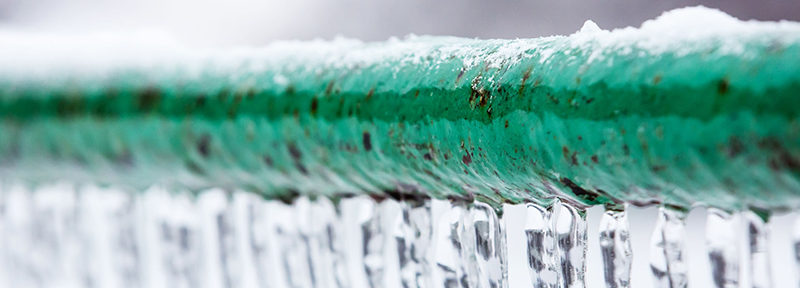
Well before the mercury ever drops below zero and winter descends across the country, experienced building owners and facility managers know the importance of taking steps to protect their buildings from frozen and burst pipes.
For most facilities, preventing damage from frozen pipes doesn’t require much beyond taking a few preventative measures. On the other hand, skipping this routine annual maintenance has the potential to cause big problems. Philadelphia Insurance Companies, one of the nation’s largest commercial insurance carriers, estimates that while the average loss related to a burst pipe claim is around $27,000, claims have been known to go as high at $1.7 million.
To prevent a potentially catastrophic event, add the following five steps to your commercial facility’s pre-winter and winter maintenance checklists to so you can minimize the potential of frozen pipes.
- Inspect & Service the HVAC System
Routine service and inspection visits from your HVAC professional are important to maintain the overall health of your HVAC system.
Prior to the start of the winter heating season (October or November), and again in winter (January or February), facility managers should set up inspection and service visits from their HVAC service providers. These visits not only ensure the heating system is running optimally, but also that potential service issues are found and repaired quickly.
During visits, your service technician should be conducting visual inspections of assembly systems, along with cleaning and lubricating components. Technicians should also be running diagnostics tests on electrical and mechanical components to determine parts that can be tuned up or may need replacement.
If your facility benefits from a designer air system (modulation technologies, variable speed scrolls, precise temperature control), regular service and inspection appointments are even more important to the health and longevity of your HVAC system.
- Audit Your Water Supply System
When was the last time you evaluated your building’s plumbing? If you’ve never conducted a water system audit, tracing from the water supply entry point through to sewage discharge, a pre-winter inspection is the time to do it. If you can’t evaluate the entire system, start with the water supply. Look for and make note of water supply lines along exterior walls or in unheated spaces and note whether those pipes are insulated or not. Check for any signs of leaks or valves that aren’t properly functioning and repair them.
Don’t overlook plumbing that services exterior or special areas of the facility either. Are the outside hose spigots on your buildings frost proof? If not, be sure that water supply to the spigots are shut off. If your property has an irrigation system, make sure the system has been drained, blown out and the water supply shut off before winter weather sets in (usually no later than late October).
If your facility has a fire suppression sprinkler system that runs through an unheated space, like an attic, consult with your system servicer for best practices. Depending on your area of the country and your fire suppression system, it may be able to withstand freezing temperatures by design.
- Insulate Pipes
Most buildings constructed over the last few decades are built with water supply piping located in interior walls, but that’s not always a guarantee. Sometimes, piping is located along exterior walls, in unheated spaces or even outside the building. One simple and fairly cost efficient solution is to install pipe insulation around interior pipes to protect them from freezing temperatures. For exterior pipes, make sure they are thoroughly wrapped with a sleeve or electrical heat tape.
Beyond helping to protect your facility from burst pipes, insulated plumbing minimizes plumbing noise, reduces mold growth, cuts down on heat loss from your hot water pipes and helps to save energy year-round.
- Inspect Unheated Spaces
Basements, crawl spaces and attics are typically areas where the space is unheated. When temperatures drop into negative territory, any plumbing running through these spaces can be vulnerable to freezing. Insulating water pipes running through these spaces is recommended. If these spaces have the capacity to be heated, keep heat in these sections of the buildings on, even if you need to lower the temperature for these sections of the building. If the pipes running through unheated spaces service outdoor spigots and irrigation systems, turn off the supply to these pipes.
- Check the Thermal Envelope
Inspecting walls, windows, doors, the roof and floor of your facility for cracks is something that is routinely recommended, and for good reason. A facility’s thermal envelope can dramatically impact not only how much energy and heat the building uses and retains, but also how much it loses. Should your facility lose power and heat, the consistency of your thermal envelope will determine how soon you have an emergency on your hands.
Before temperatures plummet, take the time to seal cracks and add insulation. The tighter and more insulated the building envelope, the less work your HVAC system must do and the longer your facility will retain heat in the event of a power loss or heating system failure.
Read Next: Modulation Technologies: Designing Great Commercial Spaces

